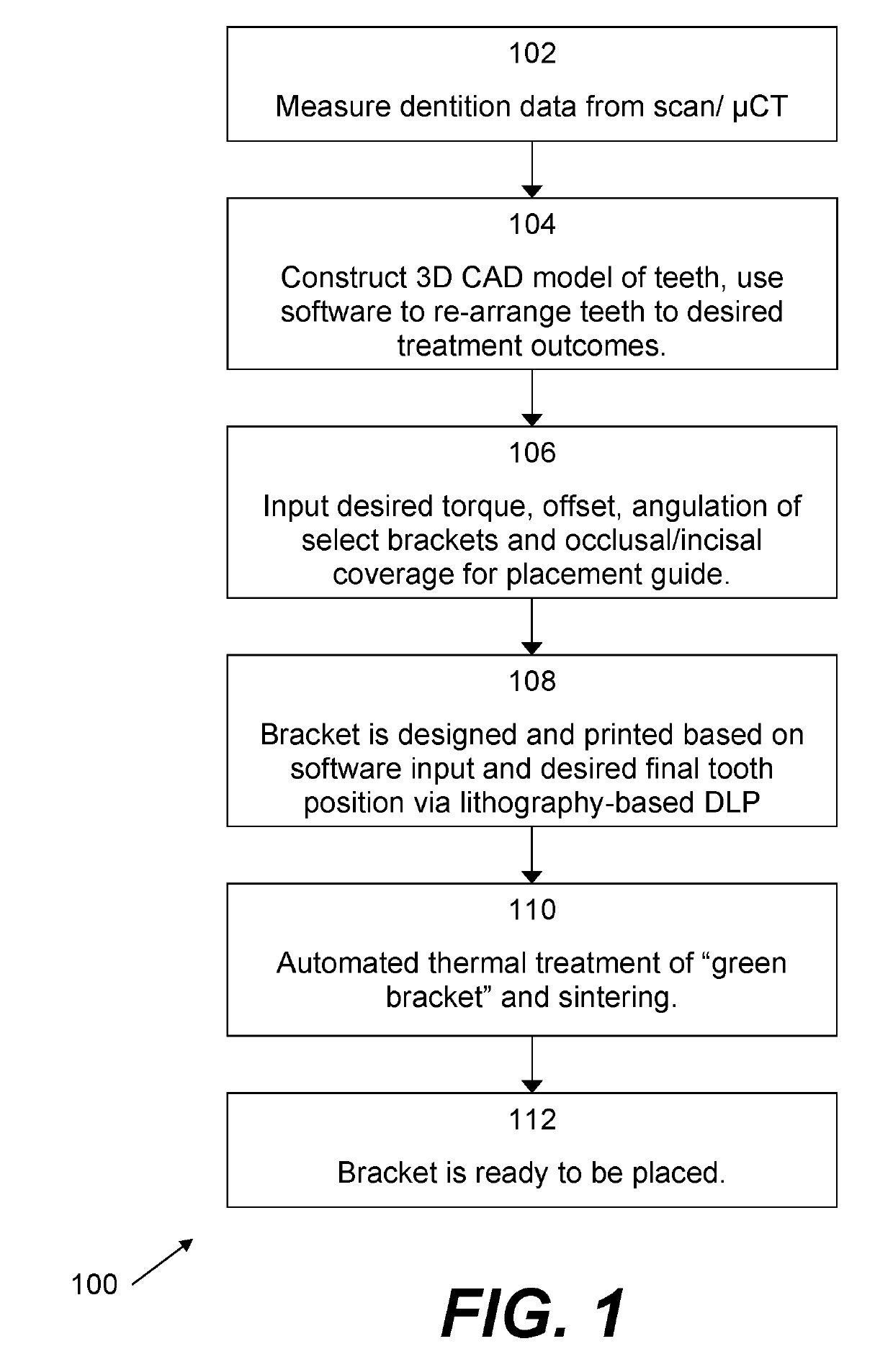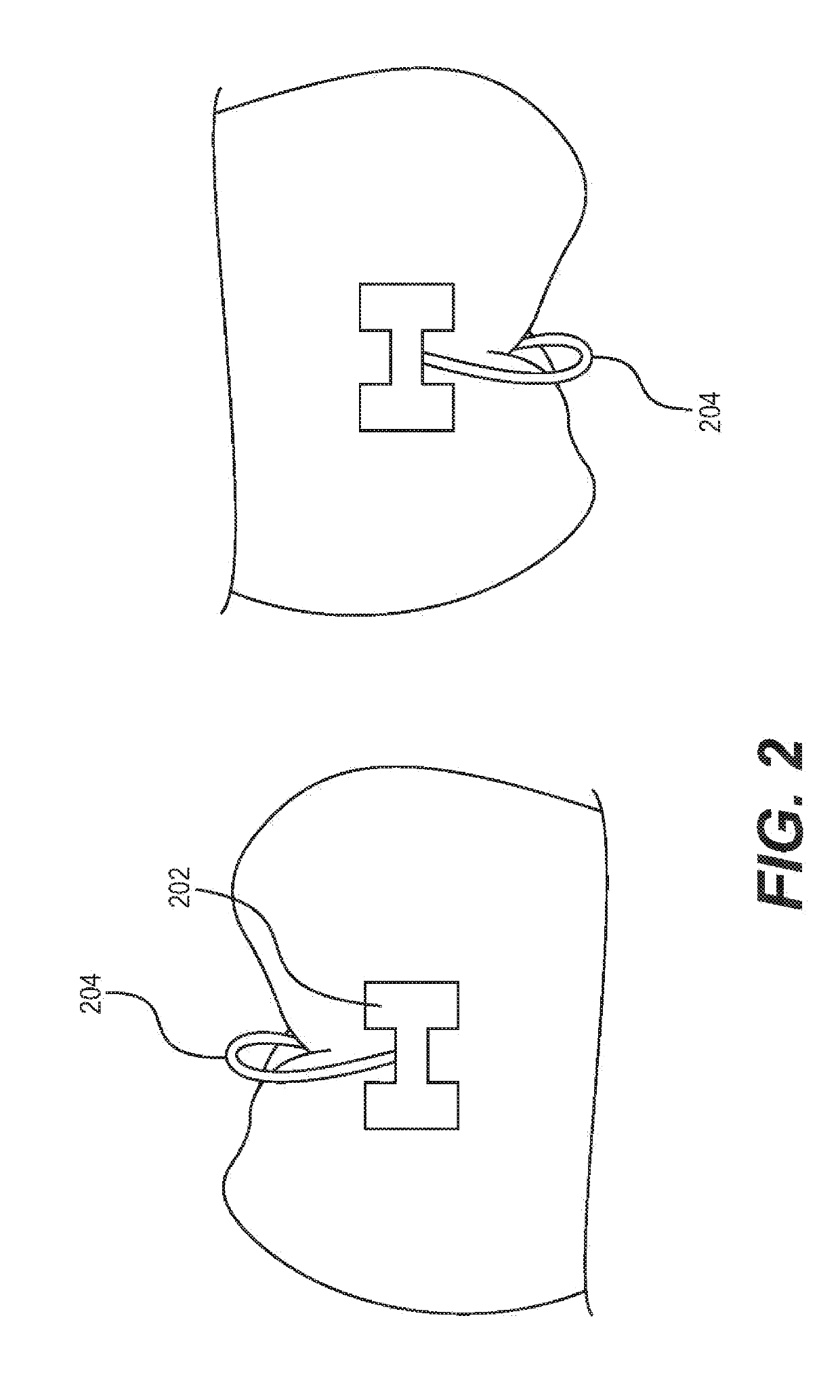Manufacture of patient-specific orthodontic brackets with improved base and retentive features
a technology of orthodontic brackets and ceramics, which is applied in the field of ceramic labial/lingual orthodontic brackets, can solve the problems of increasing patient visits and overall treatment time, no custom designed ceramic brackets available commercially, and increasing time and cos
- Summary
- Abstract
- Description
- Claims
- Application Information
AI Technical Summary
Benefits of technology
Problems solved by technology
Method used
Image
Examples
Embodiment Construction
[0047]An embodiment of the present invention provides improved techniques for creating custom lingual or labial ceramic orthodontic brackets, provides improved brackets, and which may further provide the capability for in-office fabrication of such brackets.
[0048]An exemplary flowchart of an embodiment a direct manufacturing process 100 of lingual or labial orthodontic brackets by ceramic slurry-based AM is shown in FIG. 1. The process begins with 102, in which dentition data is measured and the parameters of the tooth profile are analyzed. For example, such measurement may use CT layer scanning a non-contact 3D scanner or an intra-oral scanner directly on the patient's teeth, or may use 3D readings on a teeth model previously cast or 3D printed using a coordinate measuring machine, a laser scanner, or structured light digitizers. The scanning accuracy of such techniques is typically less than about 0.02 mm.
[0049]In 104, based on the given dentition data, a 3D CAD model of the measu...
PUM
| Property | Measurement | Unit |
|---|---|---|
| thickness | aaaaa | aaaaa |
| normal force | aaaaa | aaaaa |
| depth | aaaaa | aaaaa |
Abstract
Description
Claims
Application Information
 Login to View More
Login to View More - R&D
- Intellectual Property
- Life Sciences
- Materials
- Tech Scout
- Unparalleled Data Quality
- Higher Quality Content
- 60% Fewer Hallucinations
Browse by: Latest US Patents, China's latest patents, Technical Efficacy Thesaurus, Application Domain, Technology Topic, Popular Technical Reports.
© 2025 PatSnap. All rights reserved.Legal|Privacy policy|Modern Slavery Act Transparency Statement|Sitemap|About US| Contact US: help@patsnap.com



